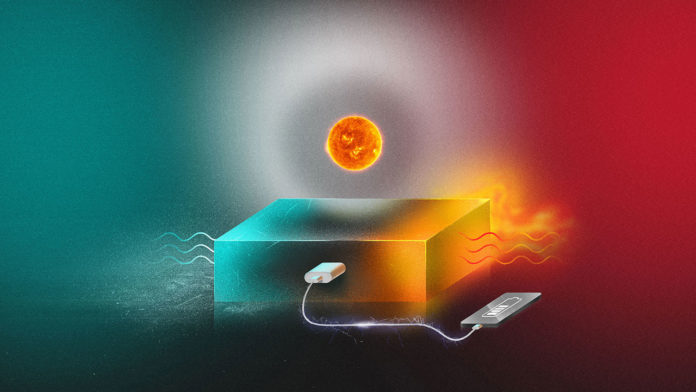Back in 2017, researchers at Chalmers University of Technology, Sweden, presented an interesting energy system that makes it possible to capture solar energy, store it for up to eighteen years and release it when and where it is needed.
By connecting it to an ultra-thin thermoelectric generator, the team has now succeeded in getting the system to produce electricity. Eventually, the research could lead to self-charging electronics using stored solar energy on demand.
Called Molecular Solar Thermal (MOST) Energy Storage Systems, the technology is based on a specially designed molecule of carbon, hydrogen, and nitrogen. When it comes into contact with sunlight, the molecule changes shape into an energy-rich isomer – a molecule made up of the same atoms but arranged together in a different way. The isomer can then be stored in liquid form for later use when needed, such as at night or in winter.
The system is refined to the point that it is now possible to store the energy for up to 18 years. A specially designed catalyst releases the saved energy as heat while returning the molecule to its original shape, so it can then be reused in the heating system. The Swedish researchers sent their specially designed molecule, loaded with solar energy, to colleagues Tao Li and Zhiyu Hu at Shanghai Jiao Tong University, where the energy was released and converted into electricity using a micrometer-thin thermoelectric generator they developed there.

“The generator is an ultra-thin chip that could be integrated into electronics such as headphones, smartwatches, and telephones. So far, we have only generated small amounts of electricity, but the new results show that the concept really works. It looks very promising,” says researcher Zhihang Wang from the Chalmers University of Technology.
As a proof of concept, the generator can produce a power output of up to 0.1 nW (power output per unit volume up to 1.3 W m−3). This might be quite small, but researchers see great potential in their molecular thermal power generation system for renewable and emissions-free energy production. The system addresses the intermittent nature of solar energy by storing it for months or years at a time and allowing it to be used on-demand.
“This is a radically new way of generating electricity from solar energy. It means that we can use solar energy to produce electricity regardless of weather, time of day, season, or geographical location. It is a closed system that can operate without causing carbon dioxide emissions,” says research leader Kasper Moth-Poulsen, Professor at the Department of Chemistry and Chemical Engineering at Chalmers.
However, a lot of research and development remains before we will be able to charge our technical gadgets or heat our homes with the system’s stored solar energy.
“Together with the various research groups included in the project, we are now working to streamline the system. The amount of electricity or heat it can extract needs to be increased. Even if the energy system is based on simple basic materials, it needs to be adapted to be sufficiently cost-effective to produce, and thus possible to launch more broadly,” says Kasper Moth-Poulsen.
